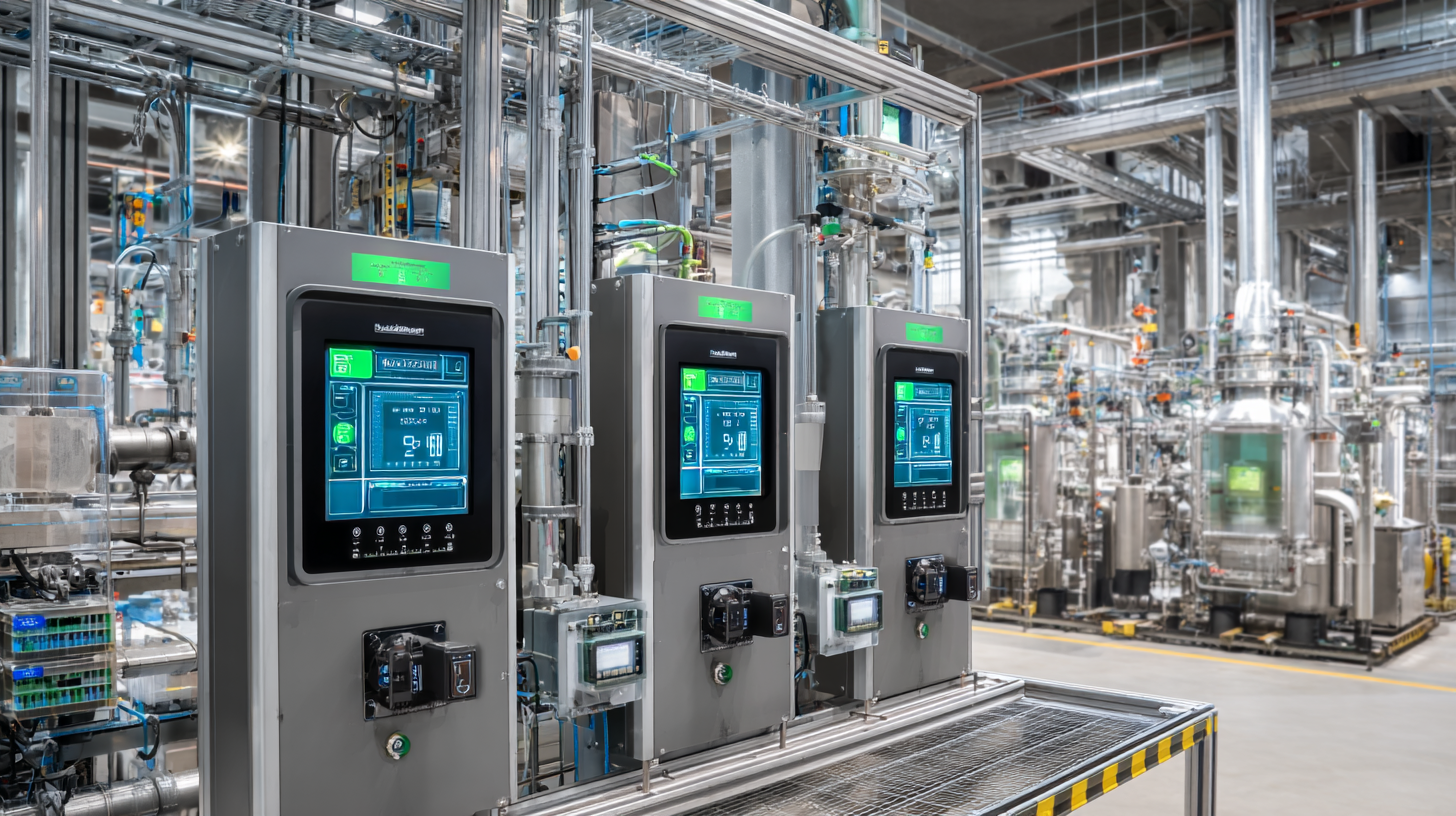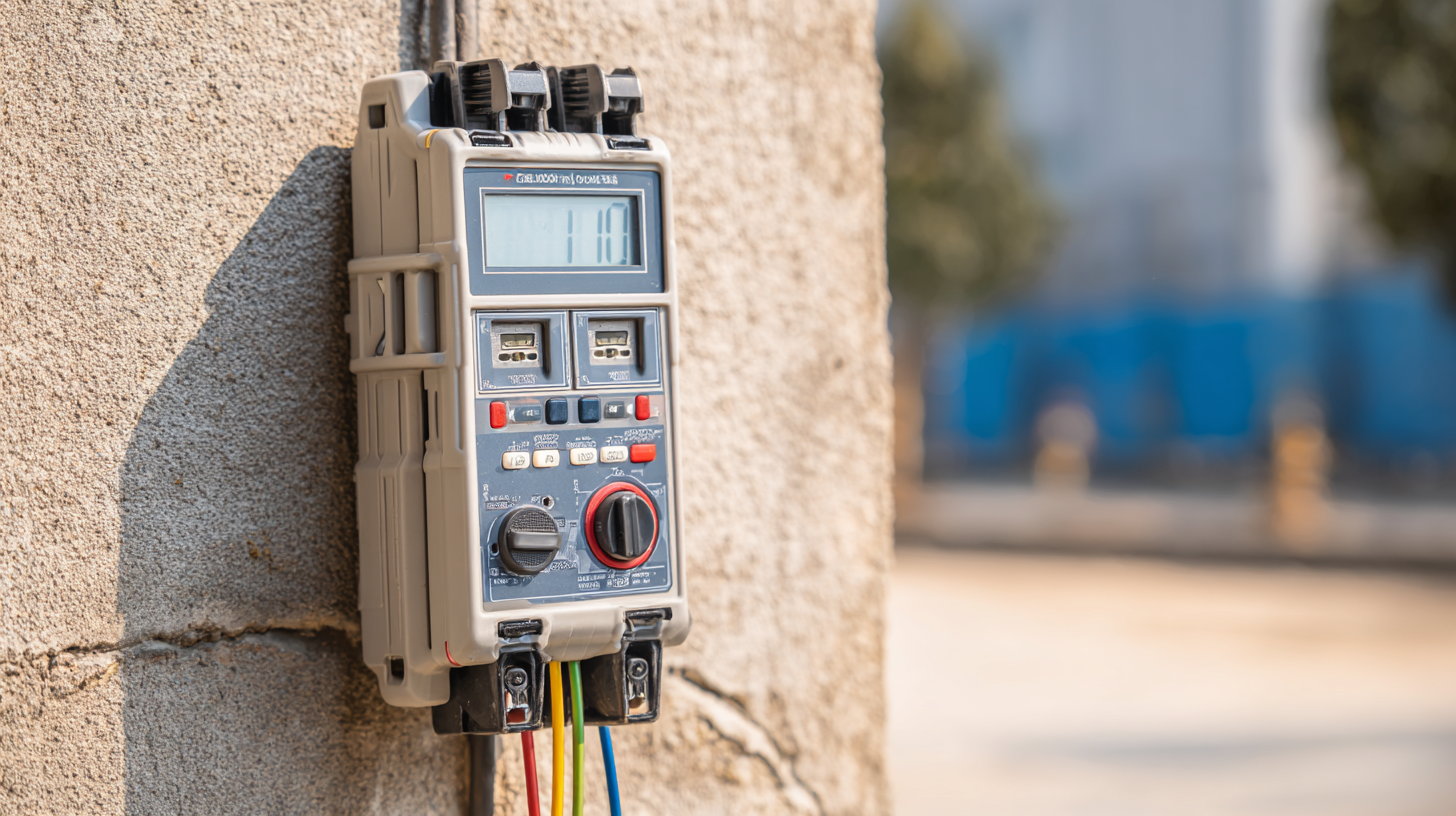Unlocking Energy Efficiency: How Flux Meters Revolutionize Industrial Monitoring and Save Costs
 In today's industrial landscape, the quest for energy efficiency has never been more pressing. As companies strive to reduce operational costs and minimize their carbon footprint, innovative solutions like the flux meter are becoming invaluable tools. Renowned energy expert Dr. Jane Thompson, a leading figure in industrial energy management, highlights the significance of this technology, stating, "Flux meters are not just instruments; they are catalysts for change, enabling businesses to pinpoint inefficiencies and optimize their energy use."
In today's industrial landscape, the quest for energy efficiency has never been more pressing. As companies strive to reduce operational costs and minimize their carbon footprint, innovative solutions like the flux meter are becoming invaluable tools. Renowned energy expert Dr. Jane Thompson, a leading figure in industrial energy management, highlights the significance of this technology, stating, "Flux meters are not just instruments; they are catalysts for change, enabling businesses to pinpoint inefficiencies and optimize their energy use."
With mounting energy costs and increasing regulatory demands, industries are turning to advanced monitoring solutions to gain insights into their energy consumption patterns. The flux meter stands out in this realm, offering precision data and real-time monitoring capabilities that were previously unattainable. These devices allow businesses to identify energy wastage, streamline operations, and ultimately unlock substantial cost savings.
As we delve deeper into the transformative potential of flux meters, it becomes clear that adopting such technologies is no longer optional for forward-thinking industries. Embracing energy efficiency not only fosters a sustainable future but also ensures a competitive advantage in an ever-evolving market.
The Impact of Flux Meters on Industrial Energy Consumption and Cost Savings
The introduction of flux meters into industrial settings has transformed the way businesses monitor and manage energy consumption. According to a report by the International Energy Agency (IEA), industries can save up to 15% on energy costs by implementing advanced monitoring technologies like flux meters. These devices provide real-time data on energy usage, allowing companies to identify inefficiencies and optimize processes effectively.
 One of the significant advantages of flux meters is their ability to pinpoint energy loss areas, enabling targeted interventions. A recent study by the American Council for an Energy-Efficient Economy (ACEEE) noted that facilities employing flux meters were able to achieve average cost savings of up to $200,000 annually. By continuously analyzing flow rates and energy input, businesses can reduce waste, leading to not just financial savings but also a smaller carbon footprint.
One of the significant advantages of flux meters is their ability to pinpoint energy loss areas, enabling targeted interventions. A recent study by the American Council for an Energy-Efficient Economy (ACEEE) noted that facilities employing flux meters were able to achieve average cost savings of up to $200,000 annually. By continuously analyzing flow rates and energy input, businesses can reduce waste, leading to not just financial savings but also a smaller carbon footprint.
Tips: Regularly review your energy data to identify trends and anomalies. Setting specific energy goals based on flux meter readings can further enhance savings. Additionally, consider integrating these readings with predictive analytics to forecast energy demands and optimize usage across various operations.
Leading Industries Adopting Flux Meters for Enhanced Monitoring Solutions
The adoption of flux meters across various industries marks a significant advancement in monitoring solutions, enhancing efficiency and cost savings. As leading industries embrace these technologies, the integration of digital current transducers becomes pivotal. These transducers promise to bolster network connectivity, enabling real-time data collection and analysis. This leap in technology ensures that companies can monitor energy consumption effectively, leading to informed operational decisions that optimize resource use.
In tandem with the rising emphasis on energy efficiency, the vibration monitoring market is also experiencing substantial growth. The analysis of this sector highlights a diversification in components, including hardware and software tailored to specific needs. As embedded systems gain traction, industries are beginning to leverage these innovations to maintain equipment integrity and performance, reducing downtime and further emphasizing the value of proactive monitoring solutions. This synergy between flux meters and monitoring technologies underpins a robust approach to industrial efficiency, ensuring that businesses stay competitive in a rapidly evolving marketplace.
Quantifying Energy Efficiency Gains through Real-Time Data Analytics
In today's industrial landscape, real-time data analytics play a crucial role in enhancing energy efficiency. The utilization of flux meters allows organizations to monitor energy consumption dynamically, providing invaluable insights that can lead to significant cost savings. By quantifying energy efficiency gains through immediate feedback, companies can identify areas for improvement and optimize their operations effectively. This method of monitoring paves the way for informed decision-making, enabling businesses to adopt energy-saving measures that drastically reduce operational expenses.
Recent research underscores the importance of measurement technologies in achieving these advancements. For instance, a climate-adaptive energy efficiency modeling approach has shown promise in assessing the performance of energy efficiency measures across varying climates. This aligns with the growing need for precise quantification of energy savings, which is essential not only for financial benefits but also for understanding the environmental impact of industrial practices. As organizations increasingly embrace data-driven strategies, the integration of such measurement tools will undoubtedly shape the future of energy consumption in the industrial sector.
Unlocking Energy Efficiency Through Real-Time Data Analytics
This chart illustrates the percentage of energy savings achieved from January to June through the implementation of flux meters and real-time data analytics. The data reflects significant improvements in energy efficiency as monitored through industrial systems.
Case Studies: Successful Implementations of Flux Meters in Manufacturing Facilities
In recent years, the implementation of flux meters in manufacturing facilities has showcased remarkable improvements in energy efficiency and cost reduction. One notable case study involves a large automotive manufacturer that integrated flux meters into their production lines. By continuously monitoring energy usage for various machines, they identified a significant overconsumption in specific areas. Adjustments were made based on real-time data, leading to a 20% reduction in energy costs and improved overall operational efficiency.
Another compelling example can be found in a food processing plant that faced challenges with energy management. By adopting flux meters, the facility was able to analyze water and energy consumption patterns closely. This comprehensive oversight enabled the plant managers to implement targeted corrective measures, such as optimizing equipment schedules and implementing maintenance practices, which resulted in a 15% decrease in energy expenditures. These case studies illustrate the transformative potential of flux meters in enhancing energy monitoring and driving substantial savings in manufacturing environments.

Future Trends in Flux Meter Technology and Their Role in Sustainable Industry Practices
The evolution of flux meter technology is pivotal in shaping the future of sustainable industrial practices. As industries become increasingly aware of their environmental impacts, the demand for efficient energy monitoring systems has surged. Advanced flux meters leverage cutting-edge sensors and data analytics to provide real-time insights into energy consumption patterns. This capability not only enhances operational efficiency but also identifies opportunities for energy savings, thereby contributing to a reduction in carbon footprints.
Looking ahead, the integration of smart technologies such as the Internet of Things (IoT) with flux meters will further revolutionize industrial energy management. This seamless connectivity allows for more precise monitoring and predictive analytics, enabling industries to optimize their energy use dynamically. Moreover, the emergence of artificial intelligence in processing flux meter data will facilitate proactive maintenance and operational adjustments, fostering a more sustainable approach to resource management. As organizations strive for greener operations, the role of flux meters will be central to achieving their sustainability goals while also realizing significant cost savings.
Unlocking Energy Efficiency: How Flux Meters Revolutionize Industrial Monitoring and Save Costs
| Parameter | Description | Current Value | Future Trend |
|---|---|---|---|
| Energy Consumption | Total energy used per unit of production | 500 kWh/unit | Target reduction of 20% by 2025 |
| Cost Savings | Savings achieved through efficiency measures | $50,000/year | Projected increase of 15% savings annually |
| Monitoring Frequency | How often data is collected | Hourly | Increased to every 15 minutes by 2024 |
| Data Accuracy | Precision of the flux meter readings | ±2% | Improvement to ±1% with new technology |
| Sustainability Impact | Environmental benefits from reduced emissions | 50 tons CO2 saved/year | Aim for 100 tons CO2 saved/year by 2026 |
Related Posts
-

Unlocking Market Potential: How Flux Meters Will Shine at the 138th Canton Fair 2025
-
Understanding Pyranometers and Their Role in Solar Radiation Measurement
-

7 Best Thermometer Sensors for Accurate Temperature Monitoring in Various Applications
-

How to Choose the Best Soil Temperature Sensor for Your Agricultural Needs
-

How to Choose the Right Thermal Conductivity Meter for Your Application
-

7 Best Materials with Exceptional Thermal Conductivity You Should Know








